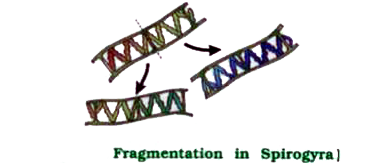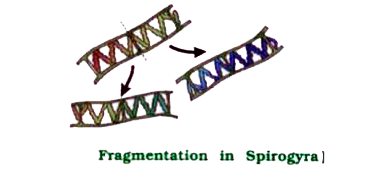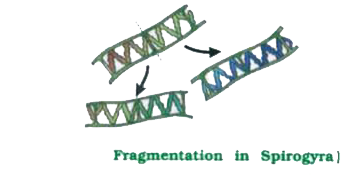Collect water samples from a pond, well, bore well.Keep then separately. Put a drop of water on a slide. Keep a cover-slip, on it. Observe. under the microscope.
What kind of microorganisms do you find in the water from a pond and borewell?Solution in Telugu
Microorganisms present in pond water are arthropods, bacteria, protozoa, hydra and algae. Coliform bacteria were found in most of the borewell water.
Topper's Solved these Questions
Similar Questions
Joints of the bone help in the _____.
View SolutionSalt is obtained from ……….
View SolutionActivity 1: Take a conical flask and collect the water in it from a pond having stagnent water and aquatic plants. Add some wheat grans and aquatic plants to it. Keep it for 3-4 days so that wheat grains and plants will decompose. Early in the morning on fourth day, take a glass slide and put a drop of that water over it. Carefully, put a cover-slip on that drop and observe under compound microscope.
View SolutionActivity 1: Take a conical flask and collect the water in it from a pond having stagnent water and aquatic plants. Add some wheat grans and aquatic plants to it. Keep it for 3-4 days so that wheat grains and plants will decompose. Early in the morning on fourth day, take a glass slide and put a drop of that water over it. Carefully, put a cover-slip on that drop and observe under compound microscope.
View SolutionTo observe filamentous algae under microscope. Apparatus : Microscope, slide, coverslip. Materials : Glycerine, pond water, blotting paper. Procedure : rarr Collect water from a lake or pond that appears dark green and contains filamentous structure. rarr Put one or two filaments on a slide. Put a drop of glycerine on the filaments and cover it with a coverslip. rarr Observe the slide under a microscope. State the example of filamentous organism.
View SolutionTo observe filamentous algae under microscope.
Apparatus : Microscope, slide, coverslip.
Materials : Glycerine, pond water, blotting paper.
Procedure :
→ Collect water from a lake or pond that appears dark green and contains filamentous structure.
→ Put one or two filaments on a slide.
Put a drop of glycerine on the filaments and cover it with a coverslip.
→ Observe the slide under a microscope.

Can you identify different tissues in the filaments ?
View SolutionTo observe filamentous algae under microscope.
Apparatus : Microscope, slide, coverslip.
Materials : Glycerine, pond water, blotting paper.
Procedure :
→ Collect water from a lake or pond that appears dark green and contains filamentous structure.
→ Put one or two filaments on a slide.
Put a drop of glycerine on the filaments and cover it with a coverslip.
→ Observe the slide under a microscope.

Why is filament of spirogyra green in colour ?
View SolutionTo observe filamentous algae under microscope.
Apparatus : Microscope, slide, coverslip.
Materials : Glycerine, pond water, blotting paper.
Procedure :
→ Collect water from a lake or pond that appears dark green and contains filamentous structure.
→ Put one or two filaments on a slide.
Put a drop of glycerine on the filaments and cover it with a coverslip.
→ Observe the slide under a microscope.

Is spirogyra a prokaryotic or eukaryotic organism ?
View SolutionTo observe filamentous algae under microscope. Apparatus : Microscope, slide, coverslip. Materials : Glycerine, pond water, blotting paper. Procedure : rarr Collect water from a lake or pond that appears dark green and contains filamentous structure. rarr Put one or two filaments on a slide. Put a drop of glycerine on the filaments and cover it with a coverslip. rarr Observe the slide under a microscope. How do spirogyra reproduce asexually ?
View SolutionActivity 1 : Take a conical flask and collect the water in it from a pond having stagnent water and aquatic plants. Add some wheat grans and aquatic plants to it. Keep it for 3-4 days so that wheat grains and plants will decompose. Early in the morning on fourth day, take a glass slide and put a drop of that water over it. Carefully, put a cover-slip on that drop and observe under compound microscope.
View SolutionCollect different water samples of fresh water. Mount them on a glass slide and observe under a compound microscope. Try to identify the organisms which are visible under it.
View SolutionTake a few drops of water from a pond. Spread on a glass slide and observe through a microscope. Do you find tiny organisms moving around?
View SolutionActivity-based question : Activity : Prepare a temporary mount of one drop of pond of water on a glass slide. Observe it under low power and high power microscope.
View SolutionCollect a cup of greenish pond water in our surroundings. Put a drop of water on the slide. Keep it under microscope and observe. What would you find out ? Draw rough
View SolutionA scientist observes a drop of pond water under an electron microscope. He sees a microorganism with no specific cell structure. Which of these can it be?
View SolutionSearch for a pond with greenish water. Collect some of the green fibres from the water. Put the fibres in a petridish and wash them clean with water. Put one of the fibres in a drop of water on a glass slide and spread it out straight. Put a cover-slip over the slide and observe under a compound microscope.
View Solution
